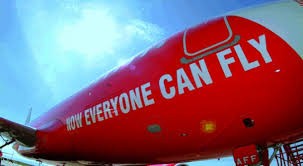In 1980 Michael Porter described three generic strategies which a company of any size (small, medium or big) can choose to pursue its competitive advantage. The three generic strategies are lower cost, product differentiation and focus. A company can choose one of three types of generic strategies; it can either choose lower costs than its competitors or product differentiation along dimensions valued by customers to command a higher price. A company also chooses the focus strategy by concentrating on a small segment of market to satisfy the segment’s unique needs or demand. Organization can choose either to focus its offering to selected segments of the market or the entire market which is called mass market. The generic strategy used by an organization reflects the organization’s strategic power.
Wal-Mart Stores Inc. has been successfully using cost leadership strategy very well for over years. The store has been attracting buyers with low prices; the low prices are offered on each product sold by the store to attract customers. The products are offered at a cheaper rate than competitors consistently, not occasionally. Wal-Mart is able to carry on the gigantic business due to its large scale and efficient supply chain management. They source products from low-priced domestic suppliers and from low-wage foreign markets. This allows the company to sell their items at low prices and they earn profits through thin margins gained from high volumes of business. The retail giant is has thus achieved price leadership.
Nike’s product differentiation strategy is to establish the company as the standard in athletic wear. By focusing on their product line, they are able to produce high quality products that meet customer expectations. Nike’s product line is not wide: they offer athletic shoes, workout clothes and a very limited number of additional products. Their focus is clear: give the athlete the equipment they need to succeed. This single-minded focus has allowed them to develop efficient networks of suppliers and manufacturers who can provide high quality materials.
In the globalized market competition, rivalry among the existing firms is inevitable regardless of whether they are domestic, international, or global. For a firm to earn profits and to continue its operations firms require to outperform its competitors; it must therefore make a clear choice between a cost leadership and product differentiation strategy in order to avoid looking “similar” like its competitor’s product. It is natural that companies which adopt lower cost strategy need to handle the value chain in the most efficient way, in order to produce products or services with the lowest price without putting quality at risk. Similarly when firms use differentiation strategy to produce unique products or services compared to its competitors, such as better quality, user-friendly, simpler, good looking etc, the company should have the capability to innovate. According to Micheal Porter (1985), each of these three generic competitive strategies is a completely different way of creating a sustainable competitive advantage. A firm must, therefore, make a choice between cost-leadership and differentiation strategies or it will land into ‘stuck-in-the middle’. Each firm needs consistency and logic in implementing strategies. In other words when firms fail to effectively pursue one of the generic strategies, it is said to be stuck in the middle.
A stuck in the middle position happens when a business designed to be low cost starts adding little extra frills which don’t add a corresponding amount to the customer value of a product. Here, the business suffers the cost because the customer perspective doesn’t see in the additional frills any benefit. Many times, a differentiated product business comes under pressure on account of prices which at times is done on account of new technology or an ultra low priced competitor from overseas who starts cutting costs which damages the differentiation advantage.
The value chain is an important technique which helps you to focus on advantage based on differentiation or cost leadership. You need to decide what your business is and isn’t. Organizations need to decide whom they wish to sell their products and whom not to sell. Strategy is about making wise choices and then having the courage and conviction to follow through and commit to turning ideas into action.
In the airlines business customers opt for a choice of carrier that is able to offer high standard quality service, on-time arrival and low fares. The difference between a low-cost and a full-service carrier is simple; low-cost airlines sell only the core product i.e. a seat to travel from one point to another to the passenger for the airfare, and passengers need to pay separately for the additional frills. Full-service airlines offer passengers a host of value added services, including in-flight meals, free beverages, and lounge for frequent fliers, among others but generally at a higher fare as these elements are packaged together. In India, airlines such as IndiGo, SpiceJet and GoAir operate as low-cost airlines. These airlines operate on low-cost model in domestic markets for two-three hours flight nicely. But, in the international segment, airlines such as Air Canada, Hainan Airlines, Korean Air, Lufthansa, Qantas and Singapore Airlines have subsidiaries with long-haul low-cost operations. The model is not yet mature enough to have reached in all parts of the world, at the moment it is stuck in the middle.
On the other hand, IKEA is one of the most successful and largest furniture retailers in the world, which sells self-assemble furniture, home decoration and daily necessities. It was founded in Sweden in 1943 and has been triumphant for 73 years. Based on Porter’s Generic Strategies, IKEA mainly follows the “Cost Leadership Strategy”. IKEA looks out for suppliers who can manufacture well-designed subassemblies at the lowest costs and customers need to assemble the products themselves. This process saves delivery costs for both producers and customers. It allows manufacturers reducing a lot of costs as soon as customers could pay for the products on a much lower price with high quality and therefore, to receive different segments of customers. This is also IKEA’s “Focus Strategy” on low costs. With the competitive price, the company could receive a vast market and easily won the business.
Besides, IKEA follows “Differentiation Strategy” to a great extent; the company innovates the way people purchase furniture. Every IKEA stores is a unique building with the noted brand symbol and style. Compared to other furnishing retailers, IKEA shows their products in prototype rooms which are miscellaneous and stylish. It provides various choices and suggestions for customers to decorate their homes and offices. In some areas, people regard strolling in IKEA stores as an entertainment because of its fashionable designed furniture and lively homelike environment. As a result, IKEA can easily receive their potential customers. Thus, even though IKEA is stuck in middle, it enjoys the position because it takes advantage of all three generic strategies very comfortably.















































